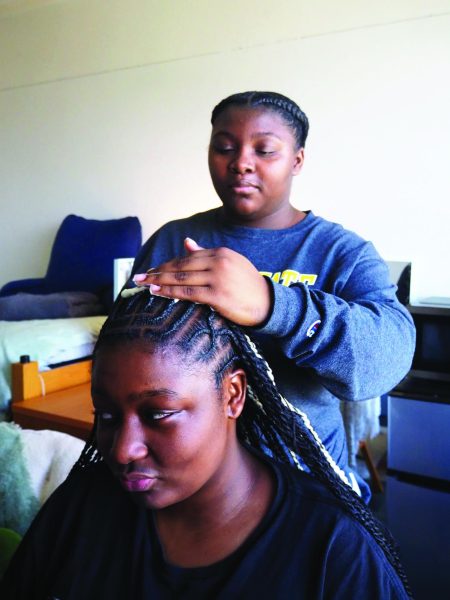Ain’t no party like a Papercut Party
October 29, 2014
Candy, balloons and tunes kept the party rocking this past week when Wayne State College’s Network and Technology Services (NATS) implemented an approach to help get students using Papercut on their personal devices.
NATS hosted Papercut parties in the Conn Library and the Student Center atrium for those curious about how to use the new printing system.
The Papercut pilot began at the start of the fall semester, and frustration has been the common feeling among students trying to adapt to the new system.
Many students who were having issues reverted back to the more familiar printers in the library.
But Papercut expanded on Oct. 14, replacing old printers near the circulation desk and installing a new printer in the Student Center atrium.
So now, students still trying to print the “old-fashioned” way have found out that signing into Papercut is required when trying to use any printer in the Conn Library.
“While students are very slowly moving away from using the print stations to submit jobs,” NATS Chief Information Officer John Dunning said, “we aren’t seeing widespread adoption of printing from personal devices. We are hoping that the Papercut parties will help to build momentum on the issue.”
The tables in the Conn Library and the Student Center were covered in candy and balloons, luring students to come over and ask questions in exchange for some free candy and helpful Papercut information.
ITC support staff worker Jennifer Johnson hosted the Papercut parties each day, and each day a different decade of music played through her laptop speakers.
Part-time NATS staff students Peter Mutayoba, Zach Kunz and Conner Schlehuber rotated in helping Johnson and getting a better idea of how the system works for themselves.
“A lot of people are finding out that the printing process works a lot faster when they have it installed on their own devices,” Johnson said.
She and Chad Smith, who is an IT Analyst Systems staff member, worked together with the Papercut company in writing the documentation and adapting the system for Wayne State College.
For students who had the courage to admit that they didn’t know how to use the system, Johnson walked them through how to install Papercut on their laptops, tablets or phones and then submit a printing job.
“Our success in alleviating the lines will largely depend on students printing from their personal devices,” Dunning said.
The process is fairly simple and straight forward, and while more students begin printing from their personal devices, it will mean shorter lines at the printers.
Introducing students to the system and making it easier for them to manage is an important part of integrating the system.
“Usually a good ten people stopped by each day,” Johnson said, “and we seem to be getting pretty good feedback.”
Although getting students on board with Papercut may take some time and possibly some more partying, Dunning says that NATS is seeing a positive response from those that have learned to use the system, and that it is also helping in reducing paper waste.
“The library used to regularly collect reams of abandoned printed documents each day from the printers,” Dunning said.
A ream is 500 sheets of paper.
“This waste is now being measured in sheets, rather than reams. This represents a very significant positive environmental impact from the implementation of the system,” he said.
Now, with Papercut being the only mode of printing, NATS will be able to better monitor student printing habits, this will allow them to be better stewards of the echnology fees that students pay for with tuition.








